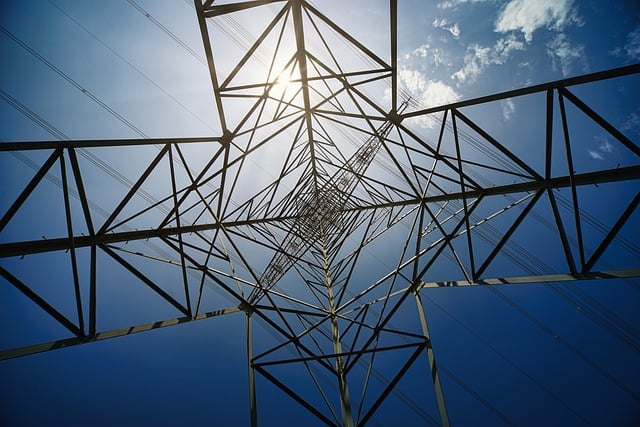“Empowering Electric Mobility: Seamless Grid Integration for a Sustainable Future.”
The transition to electric mobility is a critical component in the global effort to reduce greenhouse gas emissions and promote sustainable transportation. Central to this transition is the role of grid integration, which involves the seamless connection of electric vehicles (EVs) to the existing power grid. Effective grid integration enables the efficient charging of EVs, optimizes energy use, and supports the incorporation of renewable energy sources. By facilitating vehicle-to-grid (V2G) technologies, grid integration allows EVs to not only draw power for charging but also return energy to the grid during peak demand periods, enhancing grid stability and resilience. As cities and nations strive to expand their electric vehicle infrastructure, the integration of these vehicles into the power grid will be essential for maximizing the environmental benefits of electric mobility and ensuring a reliable, sustainable energy future.
Benefits of Grid Integration for Electric Vehicle Charging
The transition to electric mobility is a pivotal step in addressing climate change and reducing reliance on fossil fuels. As electric vehicles (EVs) become increasingly popular, the need for efficient and effective charging solutions has never been more critical. One of the most significant advancements in this area is the integration of EV charging infrastructure with the electrical grid. This integration offers numerous benefits that not only enhance the charging experience for users but also contribute to the overall stability and sustainability of the energy system.
First and foremost, grid integration allows for optimized energy management. By connecting EV chargers to the grid, utilities can better manage electricity demand and supply. This is particularly important during peak hours when energy consumption is at its highest. With smart charging technologies, EVs can be charged during off-peak hours when electricity is cheaper and more abundant. This not only reduces costs for consumers but also alleviates stress on the grid, leading to a more balanced energy distribution. Consequently, this optimization can help prevent blackouts and reduce the need for additional power plants, which often rely on non-renewable energy sources.
Moreover, grid integration facilitates the use of renewable energy sources for EV charging. As the share of renewables in the energy mix continues to grow, integrating EV charging with the grid allows for the direct utilization of solar, wind, and other renewable energies. For instance, during sunny days, excess solar energy can be harnessed to charge EVs, effectively reducing the carbon footprint associated with electric mobility. This synergy not only promotes the use of clean energy but also encourages the development of more robust renewable energy infrastructure, creating a virtuous cycle that benefits both the environment and the economy.
In addition to environmental benefits, grid integration enhances the overall user experience for EV owners. With the implementation of smart grid technologies, users can access real-time information about charging station availability, pricing, and energy sources. This transparency empowers consumers to make informed decisions about when and where to charge their vehicles, ultimately leading to a more efficient charging process. Furthermore, the ability to schedule charging during off-peak hours can result in significant cost savings, making electric mobility more accessible to a broader audience.
Another critical advantage of grid integration is the potential for vehicle-to-grid (V2G) technology. This innovative approach allows EVs to not only draw power from the grid but also return excess energy back to it. During times of high demand, EVs can discharge stored energy, providing a valuable resource for grid stability. This bidirectional flow of energy not only enhances the resilience of the grid but also offers financial incentives for EV owners, who can earn money by participating in demand response programs. As V2G technology matures, it could play a crucial role in balancing supply and demand, further solidifying the relationship between electric mobility and grid integration.
In conclusion, the benefits of grid integration for electric vehicle charging are multifaceted, encompassing energy optimization, renewable energy utilization, enhanced user experience, and innovative technologies like V2G. As the world moves toward a more sustainable future, the seamless integration of EV charging infrastructure with the electrical grid will be essential in supporting the widespread adoption of electric mobility. By leveraging these advantages, we can create a cleaner, more efficient, and resilient energy system that not only meets the needs of today but also paves the way for a sustainable tomorrow.
Challenges of Integrating Renewable Energy with Electric Mobility

The transition to electric mobility is a critical component of the broader shift towards sustainable energy systems, yet it is not without its challenges, particularly when it comes to integrating renewable energy sources into the grid. As electric vehicles (EVs) become more prevalent, the demand for electricity will inevitably increase, necessitating a robust and flexible grid that can accommodate this surge while simultaneously integrating renewable energy sources like solar and wind. However, the inherent variability and intermittency of these renewable sources pose significant challenges for grid operators and energy planners.
One of the primary challenges is the mismatch between energy supply and demand. Renewable energy generation is often unpredictable, influenced by factors such as weather conditions and time of day. For instance, solar energy production peaks during sunny afternoons, while electric vehicle charging may occur during the evening when people return home from work. This temporal disconnect can lead to periods of excess generation, where renewable sources produce more electricity than is needed, followed by times of scarcity when demand outstrips supply. Consequently, grid operators must develop strategies to balance this supply-demand equation effectively.
Moreover, the existing grid infrastructure in many regions is not equipped to handle the influx of electric vehicles and the associated increase in electricity demand. Upgrading the grid to support higher loads requires significant investment in both physical infrastructure and smart grid technologies. These upgrades are essential for enhancing grid resilience and reliability, enabling real-time monitoring and management of energy flows. However, the financial and logistical challenges of such upgrades can be daunting, particularly in areas where funding and resources are limited.
In addition to infrastructure challenges, there are also regulatory and policy hurdles that must be addressed. The integration of renewable energy with electric mobility requires coordinated efforts among various stakeholders, including utility companies, government agencies, and private sector players. However, existing regulations may not adequately support the necessary collaboration or incentivize the development of innovative solutions. For instance, policies that promote decentralized energy generation and storage can facilitate the integration of renewables into the grid, but these policies must be carefully designed to ensure they are effective and equitable.
Furthermore, the issue of energy storage cannot be overlooked. Energy storage systems, such as batteries, play a crucial role in mitigating the intermittency of renewable energy sources. By storing excess energy generated during peak production times, these systems can release energy back into the grid when demand is high. However, the current state of energy storage technology is still evolving, and while advancements are being made, the cost and scalability of these systems remain significant barriers to widespread adoption.
As we look to the future, it is clear that addressing these challenges will be essential for the successful integration of renewable energy with electric mobility. Innovative solutions, such as vehicle-to-grid (V2G) technology, which allows electric vehicles to return energy to the grid during peak demand periods, offer promising avenues for enhancing grid flexibility. Additionally, fostering public-private partnerships can drive investment in infrastructure and technology, while supportive policies can create an environment conducive to innovation.
In conclusion, while the integration of renewable energy with electric mobility presents a complex array of challenges, it also offers an opportunity to rethink and reshape our energy systems. By addressing the issues of supply-demand balance, infrastructure readiness, regulatory frameworks, and energy storage, we can pave the way for a more sustainable and resilient future, where electric mobility and renewable energy coexist harmoniously. The path forward may be fraught with obstacles, but with concerted effort and collaboration, a cleaner, more efficient energy landscape is within reach.
Smart Grids: Enabling Efficient Electric Vehicle Infrastructure
As the world increasingly shifts towards electric mobility, the integration of smart grids plays a pivotal role in establishing an efficient electric vehicle (EV) infrastructure. Smart grids, characterized by their advanced communication technologies and automated systems, facilitate the seamless interaction between electricity supply and demand. This interaction is crucial for accommodating the growing number of electric vehicles on the roads, which, in turn, necessitates a robust and responsive energy network.
One of the primary advantages of smart grids is their ability to manage energy distribution in real-time. As electric vehicles become more prevalent, the demand for charging stations will rise significantly. Smart grids can optimize the placement and operation of these charging stations, ensuring that energy is delivered where it is needed most. By utilizing data analytics and predictive modeling, grid operators can anticipate peak charging times and adjust energy flows accordingly. This not only enhances the efficiency of the grid but also minimizes the risk of overloading the system during high-demand periods.
Moreover, smart grids enable the integration of renewable energy sources, which is essential for sustainable electric mobility. As more EVs are charged using clean energy, the overall carbon footprint of transportation decreases. Smart grids facilitate this transition by allowing for the dynamic integration of solar, wind, and other renewable energy sources into the grid. For instance, during sunny or windy days, excess energy generated from these sources can be directed to EV charging stations, thereby reducing reliance on fossil fuels. This synergy between renewable energy and electric mobility is crucial for achieving climate goals and promoting a greener future.
In addition to enhancing energy efficiency, smart grids also support vehicle-to-grid (V2G) technology, which allows electric vehicles to act as mobile energy storage units. When EVs are connected to the grid, they can not only draw power for charging but also return energy back to the grid during peak demand periods. This bidirectional flow of energy helps stabilize the grid and can provide financial incentives for EV owners. By participating in demand response programs, electric vehicle owners can earn credits or payments for supplying energy back to the grid, thus creating a win-win scenario for both consumers and grid operators.
Furthermore, the implementation of smart charging solutions is another critical aspect of integrating electric vehicles into the grid. Smart chargers can communicate with the grid to determine the optimal times for charging based on energy availability and pricing. This capability allows EV owners to charge their vehicles during off-peak hours when electricity is cheaper and more abundant, ultimately leading to cost savings and reduced strain on the grid. As a result, smart charging not only enhances the user experience but also contributes to a more balanced and resilient energy system.
In conclusion, the role of smart grids in the transition to electric mobility cannot be overstated. By enabling efficient energy distribution, integrating renewable sources, supporting vehicle-to-grid technology, and facilitating smart charging solutions, smart grids are essential for creating a sustainable and effective electric vehicle infrastructure. As we move forward, the continued development and deployment of smart grid technologies will be crucial in ensuring that the transition to electric mobility is not only feasible but also beneficial for society as a whole. The synergy between smart grids and electric vehicles represents a significant step towards a cleaner, more efficient future in transportation.
The Future of Transportation: Grid Integration and Electric Mobility
As the world increasingly shifts towards sustainable practices, the intersection of grid integration and electric mobility emerges as a pivotal element in the future of transportation. The transition to electric vehicles (EVs) is not merely about replacing internal combustion engines with electric motors; it encompasses a broader transformation of our energy systems and urban landscapes. At the heart of this transition lies the necessity for effective grid integration, which ensures that the growing demand for electricity from EVs can be met without compromising the stability and reliability of the power supply.
To begin with, the integration of electric mobility into the existing grid infrastructure is essential for maximizing the benefits of EV adoption. As more consumers and businesses opt for electric vehicles, the demand for charging infrastructure will surge. This demand necessitates a robust and flexible grid capable of accommodating increased electricity loads, particularly during peak charging times. By enhancing grid capacity and resilience, utilities can ensure that EV owners have access to reliable charging options, thereby alleviating range anxiety and encouraging further adoption of electric vehicles.
Moreover, the role of renewable energy sources in this equation cannot be overstated. As the grid becomes increasingly reliant on solar, wind, and other renewable energy sources, the synergy between electric mobility and clean energy generation becomes apparent. For instance, charging EVs during periods of high renewable energy production can significantly reduce the carbon footprint associated with electric transportation. This not only supports environmental goals but also stabilizes the grid by utilizing excess energy that might otherwise go to waste. Consequently, the integration of EVs into the grid can facilitate a more sustainable energy ecosystem, where transportation and electricity generation work hand in hand.
In addition to enhancing sustainability, grid integration also opens up opportunities for innovative technologies and business models. Vehicle-to-grid (V2G) technology, for example, allows EVs to not only draw power from the grid but also return electricity during peak demand periods. This bidirectional flow of energy can help balance supply and demand, reduce strain on the grid, and provide financial incentives for EV owners. As such, the development of smart grids equipped with advanced metering and communication technologies is crucial for realizing the full potential of electric mobility.
Furthermore, the transition to electric mobility and its integration with the grid can drive economic growth and job creation. The demand for skilled workers in areas such as renewable energy, grid management, and EV manufacturing is expected to rise significantly. This shift not only supports the creation of new jobs but also fosters innovation in related sectors, such as battery technology and energy storage solutions. By investing in grid integration and electric mobility, governments and private entities can stimulate economic development while addressing pressing environmental challenges.
In conclusion, the future of transportation is inextricably linked to the effective integration of electric mobility into our energy systems. As we navigate this transition, it is imperative to prioritize the development of resilient grid infrastructure, harness renewable energy sources, and embrace innovative technologies. By doing so, we can create a sustainable, efficient, and economically viable transportation ecosystem that benefits individuals, communities, and the planet as a whole. The path forward is clear: a collaborative approach that unites the realms of transportation and energy will pave the way for a cleaner, greener future.
Q&A
1. **Question:** What is grid integration in the context of electric mobility?
**Answer:** Grid integration refers to the process of connecting electric vehicles (EVs) and charging infrastructure to the electrical grid, enabling efficient energy management and supporting the increased demand for electricity from EVs.
2. **Question:** How does grid integration support the adoption of electric vehicles?
**Answer:** Grid integration facilitates the development of reliable and accessible charging networks, ensuring that EV users have convenient charging options, which in turn encourages more consumers to switch to electric mobility.
3. **Question:** What are the benefits of grid integration for renewable energy sources?
**Answer:** Grid integration allows for better utilization of renewable energy sources by enabling demand response strategies, where EV charging can be aligned with periods of high renewable energy generation, thus reducing reliance on fossil fuels.
4. **Question:** What challenges does grid integration face in the transition to electric mobility?
**Answer:** Challenges include the need for infrastructure upgrades, managing peak demand, ensuring grid stability, and addressing the variability of renewable energy sources while accommodating the growing number of EVs.
Conclusion
Grid integration plays a crucial role in the transition to electric mobility by ensuring that the increased demand for electricity from electric vehicles (EVs) can be met sustainably and efficiently. It facilitates the development of smart grids that can manage energy distribution, optimize charging times, and incorporate renewable energy sources. Effective grid integration enhances the reliability and resilience of the energy supply, supports the expansion of charging infrastructure, and enables vehicle-to-grid technologies that allow EVs to contribute to grid stability. Ultimately, robust grid integration is essential for maximizing the environmental benefits of electric mobility and achieving a sustainable transportation future.




